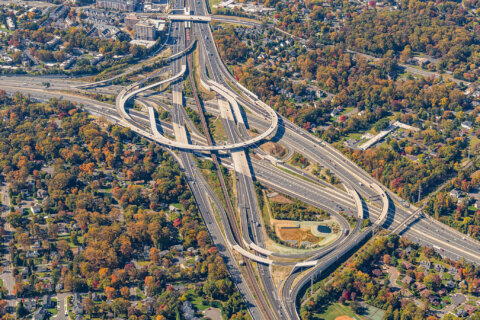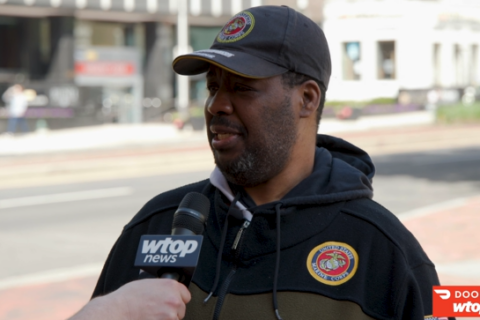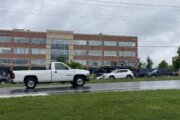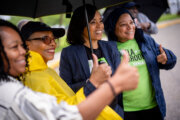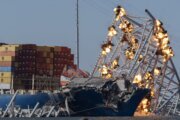This content is sponsored by the National Landing BID.
National Landing benefits from a multibillion-dollar transportation investment program that is transforming the area into the nation’s most well-connected downtown. An essential component of this plan – the redevelopment of Route 1 – plays a pivotal role in the future of the community.
Designed and built in an auto centric era, Route 1 has divided the community for decades, inhibiting not only accessibility, but also the ability to come together as a singular downtown district.
As development of all kinds continues to flock to the area, the National Landing Business Improvement District (BID) believes the highway’s transformation into an at-grade multi-modal urban boulevard is the largest and most comprehensive opportunity to achieve the vision of a truly walkable and connected urban downtown.
To advance their work and invite the community to participate more actively, the BID recently launched “People Before Cars,” a consumer campaign developed from the organization’s Reimagine Route 1 report, which was released last October and offered guiding principles and potential concepts for the corridor’s transformation.
In “People Before Cars,” the BID explains that through smart design and a sustainable approach, the roadway can be modified from its current state as a highway into a gateway that prioritizes the community and puts people first. This transformed corridor can better serve the needs and desires of the ever-evolving neighborhood by creating a safer and more attractive place, while unlocking untapped economic potential.
Safety serves as the cornerstone of the BID’s plan, which draws on best practices in street design to improve the Route 1 experience. Increased visibility, buffers, and adequate facilities aid in limiting danger to those who are most vulnerable – cyclists and pedestrians.
The BID’s redesign prioritizes comfortable and convenient crossings; promotes walking, biking, mass transit and other forms of mobility; encourages human connections and scale; and provides dedicated and well-defined spaces for all users via a street network that is intuitive, smart and flexible.
In addition to being able to safely traverse the corridor, the BID’s Route 1 proposals creates a place people will want to spend time. Widened sidewalks and placemaking features such as memorable public art perform double duty protecting walkers while adding to the overall ambiance. By freeing up space to incorporate people-centric amenities, such as widened sidewalks, café seating, lighting, and lush landscaping, as well as additional room for commercial and residential development, Route 1 would become a place to walk, meet and socialize.
Take the Magnificent Mile in Chicago as an example. The 13-block stretch has a similar vehicle carrying capacity to Route 1, yet it boasts a walkable and vibrant public realm with safe connections to transit and a well-connected street grid. It has a mix of uses, including residences, retail, restaurants, and offices with entrances and lobbies at street level that create a lively, engaging environment.
Route 1 has the ability to be transformed into an iconic corridor like Magnificent Mile – one that would keep Arlingtonians safe, provide new places to gather and drive economic growth and development. The Virginia Department of Transportation (VDOT) is in the midst of an analysis to determine a new design for Route 1. The agency has asked the public to help shape Route 1’s future by sharing thoughts and priorities for the roadway.
To learn more about the “People Before Cars” campaign and ways that the community can help advance the BID’s vision for green, safer and more inviting Route 1, please visit their website.


